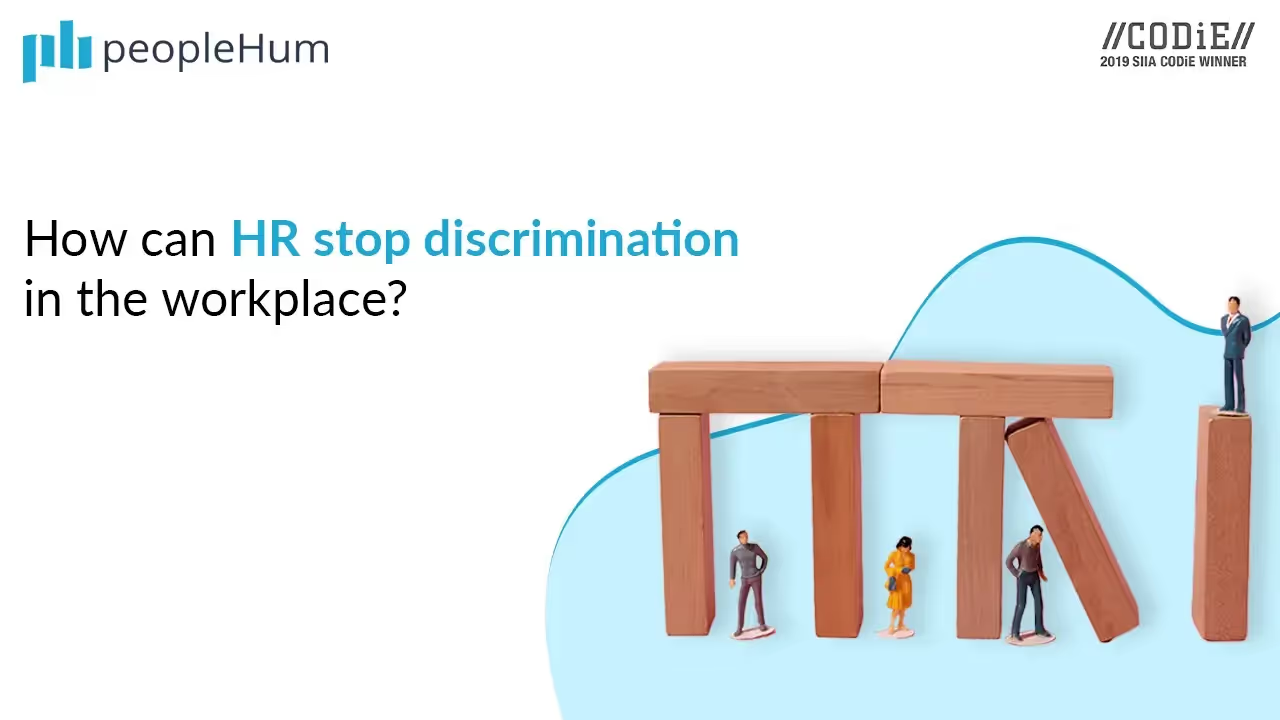Introduction
Let's say, we’ve got Sarah and Jamal, two top-performing employees in their department, both in the running for a much-deserved promotion. They've both put in equal time, delivered impressive results, and both vying for the same promotion. . However, when the decision is made, Sarah is promoted, leaving Jamal wondering where he fell short. After looking into it, HR finds out that Jamal was passed over not because he lacked talent or commitment, but due to an underlying assumption that his parental duties might affect his commitment to work. This situation right here illustrates why it’s important for managers and HR to focus on skills, performance and qualifications in their evaluations—without letting personal circumstances cloud their judgment.
This scenario doesn’t just raise eyebrows; it calls out the elephant in the room–discrimination.
With the collaborative efforts of management and HR, strategic initiatives can be devised to foster workforce equality and promote mental health and well–being.
Strategies for proactively addressing workplace discrimination
In today's global workforce, fostering a culture of inclusivity and equality is not just a moral imperative—it's essential for business success. For HR professionals, this means taking the lead in tackling workplace discrimination head-on. It's about creating an environment where all employees feel valued and respected, laying the groundwork for all to contribute their best. Here are some simple yet actionable strategies to help achieve this goal:
1. Kickstart change with awareness and training:
Education is the first step towards combating discrimination. Launch comprehensive training initiatives for all employees that focus on dismantling unconscious bias, nurturing empathy for diverse perspectives and cultivating a culture of respectful communication. It's about transforming attitudes, not just imparting knowledge.
2. Lay out crystal-clear policies and procedures:
Develop comprehensive policies that cover every facet of —from recruitment to promotions, pay equity, and terminations— and ensure these rules are communicated effectively to everyone in your organization. Ensure that these policies are clearly communicated to all employees and consistently enforced. Rigorous enforcement is key; there should be no grey areas when it comes to equality.
3. Strengthen reporting and support systems:
Create a safe and confidential reporting mechanism for employees to raise concerns or incidents of discrimination. Make sure that every employee knows that they have a voice that will be heard, respected and protected. This means providing a confidential channel for reporting issues and ensuring that every report is met with serious action and support—whether that's counseling, mediation, or other resources.
4. Drive accountability through leadership:
Accountability starts at the top. Demand that managers and leaders not only talk the talk but also walk the walk by promoting diversity and inclusion within their teams. Measure their success not just by traditional metrics but by how well they foster an inclusive environment. Regular feedback and tangible diversity objectives should be part and parcel of performance evaluations, pushing everyone to not only meet but exceed these crucial benchmarks.
5. Implement rigorous audits and feedback mechanisms:
Don't just set it and forget it. Regularly review your organization's policies, practices and culture for hidden biases or discrimination. Use anonymous surveys, focus groups and exit interviews as tools to capture the real pulse of your workforce.
6. Lead by example:
Show, don’t just tell. HR isn't just about policies; it's about setting the standard. Every decision, from recruitment to recognition, should be a testament to your unwavering commitment to these principles. Demonstrate through action that inclusivity isn't a checkbox but a core value.
7. Collaborate with external partners:
Strengthen your efforts by engaging with external organizations– industry associations, diversity networks, community groups – that can offer fresh insights and resources for addressing workplace discrimination. Share knowledge and experiences with other HR professionals to drive collective action.
8. Continuously educate and adapt:
The fight against discrimination is ongoing, and requires a commitment to continuous learning and adaptation. Stay informed about new laws, societal trends, and best practices in diversity and inclusion. Be prepared to reassess and adjust your strategies as needed to ensure their effectiveness.
How can HR prevent discrimination in an organization?
Preventing discrimination involves several steps:
- Educating all staff on what discrimination entails
- Training managers to handle incidents appropriately
- Handling complaints confidentially
- Enforcing strict anti-discrimination policies and regularly reviewing and updating these policies.
This proactive approach not only cultivates a happier, more productive workforce but also avoids the negative impacts of discrimination on company morale, culture, and legal matters.
Conclusion
Creating a thriving workplace means fostering an environment where discrimination and harassment have no place. While it's challenging, it's crucial to put in the effort to minimize ambiguity. As an employer, while competitive pay is important, prioritizing a positive atmosphere is key to attracting and retaining happy, productive employees.
People Also Ask
How can you deal with discrimination in the workplace?
To effectively address discrimination in the workplace, HR professionals should prioritize awareness, clear policies and support systems. Promoting education and training sessions on discrimination, establishing transparent anti-discrimination policies and encouraging employees to report incidents are crucial steps.
Providing support services for those affected and taking decisive action against offenders demonstrate a commitment to fostering a safe and inclusive environment. By fostering a culture of inclusivity, leading by example, and continuously improving policies and practices, HR professionals can play a pivotal role in creating workplaces where diversity is celebrated and all employees feel valued and respected.




































.avif)














